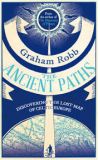
29 Oct 2013 04:43:57
The implications, in case your knowledge of Celtic culture goes no further than Asterix or Caesar's Gallic War, are that there was an advanced culture in Europe long before the Romans, that they understood the movement of the sun (and presumably the stars) and produced accurate maps of sacred geography. What's more, as Robb now realised, thanks to computers, the achievements of druidical science could be charted. The implications, he admitted, might also be too extraordinary to be believed.
The Romans did a good job of writing their predecessors out of history. They did this by erasing their achievements on the ground – many Roman roads follow the straight lines of earlier Celtic routes – and by subverting the memory of what they created, which was easily done as the Celts left no written records. As the conquerors got to write the history, we have to rely on Caesar's account of what they found. But as Robb makes clear, Caesar told only part of the story, relating, for instance, how quickly his troops moved across Gaul, but omitting to mention that they were able to do so because the "savages" he had just conquered had already laid roads and built bridges.
The word palimpsest applies here and Robb has a mission. When we walk over remains of the past, he would like us to remember that the Celtic/ druidical layer lies beneath the Roman. In the same way, he would like us to accept that Celtic culture lies beyond the Roman. It is easy to accept the idea of reused locations: the Roman Fisterra, the sanctuary at land's end beyond the shrine of St James at Compostela, Spain, for instance, stands on a Celtic sun altar, just as many current towns and cities across Europe stand along the route of Gaulish solar paths. But it is harder to accept the veracity of Robb's description of the daily life of druidical scholars. It might be true that they studied for 20 years and were sufficiently advanced to create sophisticated mechanical objects, while choosing not to construct imposing buildings. But, as the number of times he uses the words "might" and "probably" suggests, there is simply not enough evidence, yet, to substantiate some of these claims, which is why Robb was right to be concerned that this story might just be too extraordinary to be believed.
An impressive amount of learning and energy has gone into The Ancient Paths, and it contains more than enough of interest, curiosity and amazement to please demanding Celtophiles. Robb fans will also be pleased by the memorable descriptions of places and of his movements through them. But some will find, as I did, that the book is unnecessarily dense and, in spite of the author's obsession, and his efforts to convince us of the advanced state of Celtic culture, the view of these people remains obscure.

